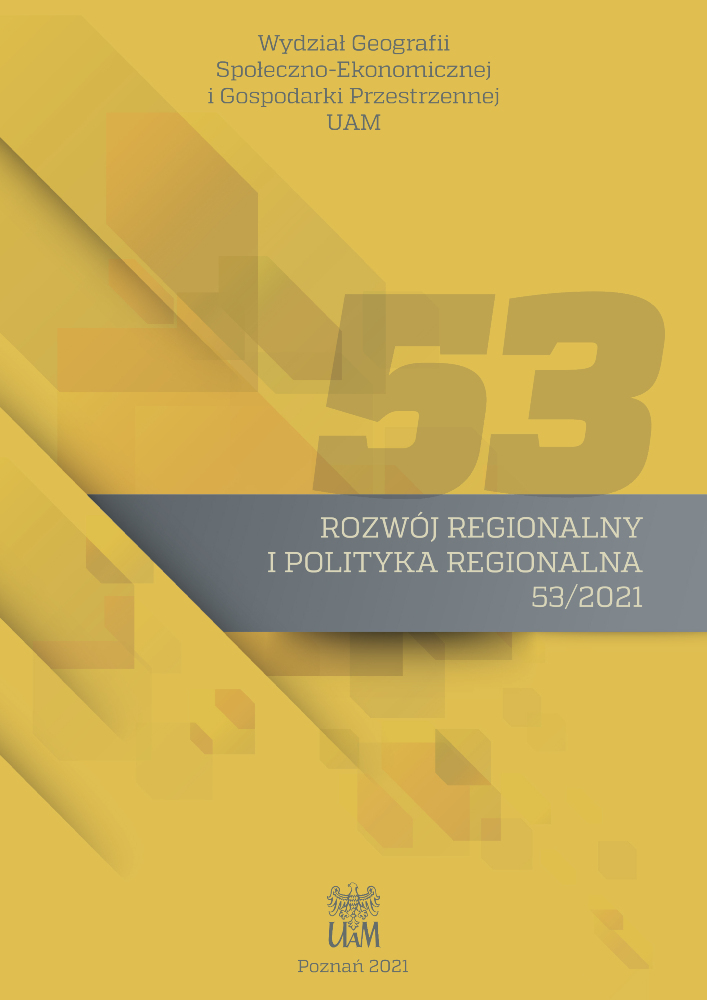Abstract
Św. Marcin street in Poznań used to be one of the most important places in city, which was full of life. In order to restore the old character of the space, the street was include in the “Centrum I” revitalization project, the aim of which was to revitalize public space, renew the technical infrastructure and calm down car traffic. After completion of renovation works and handing over part of św. Marcin street a many opinions of the users of the space under study appeared, saying that it is still inaccessible due to the presence of architectural-urbanistic barrier. The aim of the lecture is to present how the revitalisation measures have influenced the level of accessibility to the space of św. Marcin street in Poznań. The authors will answer the question whether the revitalization project was created and implemented taking into the priciples of universal design.
References
Adamczyk M.D. 2017. Starzenie się społeczeństwa polskiego wyzwaniem dla zrównoważonego rozwoju. Zeszyty Naukowe Politechniki Śląskiej, Organizacja i Zarządzanie, 106: 105–113.
Bettye R.C., Jones M., Mace R., Mueller J., Mullick A., Ostroff E., Sanford J., Steinfeld E., Story M., Vanderheiden G. 1997. The Principles of universal design. The Center for Universal Design NC State University.
Bierwiaczonek K. 2018. Miejskie przestrzenie publiczne i ich społeczne znaczenia – próba systematyzacji. Przegląd Socjologiczny, 67.
Donderowicz M., Kaczmarek P. 2018. Poznańska Mapa Barier – dobre praktyki w badaniu dostępności przestrzeni. Rozwój Regionalny i Polityka Regionalna, 42: 103–113.
Gminny Program Rewitalizacji dla miasta Poznania.
Hamraie A. 2017. Building access: Universal design and the politics of disability. University of Minnesota Press.
Hansen W.G. 1959. How Accessibility Shapes Land Use. Journal of the American Institute of Planners, 25(2): 73–76.
Iwarsson S., Ståhl A. 2003. Accessibility, usability and universal design – positioning and definition of concepts describing person-environment relationships. Disability and Rehabilitation, 25(2): 57–66.
Konwencja o prawach osób niepełnosprawnych.
Kopeva A., Ivanova O., Zaitseva T. 2018. Application of Universal Design principles for the adaptation of urban green recreational facilities for low-mobility groups (Vladivostok case-study). IOP Conference Series: Materials Science and Engineering (MSE) 463, 1.
Kostrzewska M. 2017. Activating Public Space: How to Promote Physical Activity in Urban Environment. IOP Conference Series: Materials Science and Engineering, 245.
Kubicki P. 2017. Polityka publiczna wobec osób z niepełnosprawnościami. Oficyna Wydawnicza SGH, Warszawa.
Lid I.M. 2014. Universal design and disability: An interdisciplinary perspective. Disability and Rehabilitation, 36(16): 1344–1349.
Nowak Z. Kaczmarek P., Koliński K., 2019. Rondo Kaponiera z perspektywy Poznańskiej Mapy Barier. [W:] W. Truszkowski. Uwarunkowania budowy biogospodarki i zrównoważonego rozwoju w Polsce. Wydawnictwo Katedry Agrotechnologii, Zarządzania Produkcją Rolniczą i Agrobiznesu, Uniwersytet Warmińsko-Mazurski w Olsztynie.
Parysek J. 2012. Współczesne miasta i problemy ich funkcjonowania i rozwoju. [W:] J. Parysek (red.), Kształtowanie przestrzeni miejskiej: aspekty teoretyczne i praktyczne. UAM, Poznań, s. 9–57.
Preiser W.F.E., Smith K.H. 2011. Universal Design Handbook. 2nd ed. McGraw Hill, London.
Raport z badania dla właścicieli nieruchomości i przedsiębiorców 2015a.
Raport z badania dla mieszkańców i przechodniów 2015b.
Sirel A., Sirel O.Ü. 2018. Universal Design – Approach for the Participation of the Disabled in Urban Life. Journal of Civil Engineering and Architecture, 12: 11–21.
Steinfeld E., Maisel J. 2012. Universal design: Creating inclusive environments. John Wiley & Sons.
Story M.F. 2001. Principles of universal design. Universal design handbook. McGraw Hill, London.
Story M.F., Mueller J.L., Mace R.L. 1998. The universal design file: Designing for people of all ages and abilities.
Szumigała P. 2017. Ulica Święty Marcin – doświadczenia poznańskie. Kwartalnik Architektury i Urbanistyki PAN, 4: 83–110.
Ustawa z dnia 9 października 2015 r. o rewitalizacji.
Wysocki M., Charłampowicz R. 2010. Projektowanie otoczenia dla osób niewidomych: pozawzrokowa percepcja przestrzeni. Wydawnictwo Politechniki Gdańskiej, Gdańsk.
License
Copyright (c) 2021 Krystian Koliński, Zuzanna Nowak

This work is licensed under a Creative Commons Attribution 4.0 International License.

